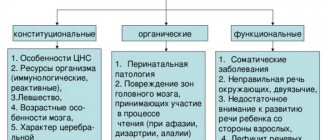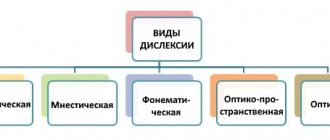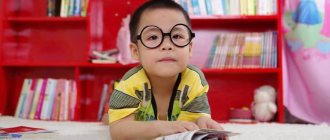Dyslexia is a chronic reading problem that affects a large number of people, especially people with various types of disabilities. Dyslexia affects up to 15% of the population in developed countries. People with dyslexia often have problems not only with reading, but also with writing, spelling, math, and sometimes music. Dyslexia is three times more common in men than in women.
What is dyslexia
Albert Einstein, Walt Disney, Keanu Reeves and Vladimir Mayakovsky - it would seem that what could these people from different eras and professions have in common, except that many people on the planet know their names? All of them faced dyslexia, which did not prevent them from achieving world fame.
Dyslexia is not a disease
Dyslexia is not a disease or lack of intelligence. A feature of the brain that prevents its owner from perceiving information the way ordinary people do. It is expressed in different forms, the main of which are:
- difficulties with reading skills;
- problems with writing skills;
- difficulties with grammar;
- periodic impairment of motor skills and coordination;
- poor concentration.
Dyslexia was first identified at the end of the 19th century in Germany. Ophthalmologist Rudolf Berlin described the symptoms after working with a young patient who had no difficulties with communication and physical development, but was completely unable to comprehend grammar and reading. The doctor attributed the deviation to visual pathologies.
In 1925, the theory was refuted by neurologist Samuel Orton, according to his research, dyslexics had asymmetry of the brain lobes. This statement also turned out to be false, and only in the 1970s did scientists agree that dyslexia manifests itself in people with poor metaphonological and phonological development. That is, due to a failure in the process of acquiring adult speech patterns. During the period of early development, each child gradually masters speech skills; at first, they do not finish words, confuse syllables, or express thoughts unclearly. As most people get older, their neurons overcome this and speech becomes clearer. Later, they find it easier to write and read, unlike dyslexics.
The child masters reading skills
According to research, patients with dyslexia:
- have an active right hemisphere of the brain;
- have differences in the weight of the hemispheres;
- most have experienced birth trauma;
- have experienced a head injury;
- suffered a dangerous infection (for example, meningitis);
- suffered from infections in the womb (measles, rubella, herpes) or gave birth to a dependent mother.
The manifestations of deviation are aggravated by: lack of pedagogical education, lack of communication, destructive environment, physical isolation (which threatens complete loss of speech, with a healthy brain and normal physical development). Dyslexia is 5 times more common in boys than in girls. This is a feature that lasts a lifetime, but its manifestations can be corrected and the child (or adult) adapted. The sooner it is detected, the easier the measures taken will be assimilated by the brain.
Symptoms of dyslexia
Most often, parents notice the first signs of dyslexia, since it does not cause inconvenience to a child under 4-5 years of age. If 5 or more signs from the following list coincide, consultation with an experienced neuropsychologist and speech therapist is required.
Problems communicating with a child
For preschoolers:
- communication problems;
- late speech;
- incorrect placement of a pencil or pen in the hand after repeated training;
- has difficulty understanding new words and problems with their pronunciation;
- disordered sequence of words in speech and on paper, rearrangement of letters;
- difficulties with basic principles of letter writing and reading.
In everyday life, you can notice sloppiness in drawing, especially when working with coloring. A child cannot remember where is right and where is left; it is difficult to teach him to understand the time on a clock. He cannot name consecutive months or seasons, misses endings in words, and adds non-existent letters. There are great difficulties with tying shoelaces or fastening buttons. Of course, these signs must be consistent with the child’s age; accurate diagnosis is only possible through testing by specialists.
The child does not understand arithmetic
Obvious signs appear by the 5th grade of school:
- changes the words he reads to ones that sound similar;
- rearranges letters and syllables when reading;
- does not understand what he just read;
- confuses numbers and arithmetic signs;
- does not remember simple concepts well;
- cannot concentrate, is constantly distracted;
- behavior is awkward, clumsy, impulsive;
- perceives information slowly;
- coordination is impaired.
You can notice how the child involuntarily swaps syllables when reading; he is restless and impatient. When doing homework, he constantly dangles his leg or fidgets, standing up and sitting down. Loses things, forgets requests or what was said a few minutes ago. Often the behavior of a small person is associated with laziness and banal bad manners, but this is a mistake.
Adults have similar symptoms, which they often mistake for their own stupidity or absent-mindedness. Dyslexia can bring many difficulties, for example, the inability to read even a short note normally, poor memory for events and faces, problems with writing and counting.
Dyslexia causes many problems in life
“Doctors discovered that I had dyslexia when I needed a prescription for glasses. During the examination, I was given huge glasses with one red lens and the other blue. They asked me to read a passage and then asked 10 questions about what I had just read. I could only answer three. They studied how my eyes move while reading. It turned out that I read four words, then go back two. I didn’t read some words at all.”
Jennifer Aniston, source: Instagram.
Why does a child miss letters?
It is important to conduct a correct diagnosis to determine the cause of the writing disorder. This is the only way to create a competent and effective correction program.
The neuropsychological structure of writing in younger schoolchildren is much more complex than in older ones. When automating the writing function, the structure is simplified, and at 6-8 years old it consists of 7 components:
- Maintaining optimal brain energy levels. The so-called energy block of the brain is responsible for this (block I according to the classification of A.R. Luria). A clear manifestation of the weakness of this block of the brain may be difficulties in engaging in a task. A child’s behavior such as “catching crows in class” can indicate neurodynamic difficulties and low motivation.
Important: It is important for parents to know that motivation is very important for children of preschool and primary school age to maintain performance. Since the areas of the brain responsible for volition are not fully formed, the child must be interested in activities in order to maintain the proper level of attention. In other words, it is much more difficult for a child than for an adult to do something when it is “necessary” but not interesting.
- Processing of kinesthetic information – processing of information from moving organs when writing (graphic movements). These operations are performed in the anterior-parietal regions of the brain. If the functioning of this link is disrupted, difficulties in writing may occur, such as confusion in letters that are similar in spelling (u-i, sh-shch, zh-kh).
- Processing of auditory information (when writing from dictation). Errors in processing auditory information include confusion in sounds that are similar in sound (zh-z, t-p, t-k, t-n), or confusion and replacement of deaf-voiced, hard-soft sounds (r-r, z- With).
- Processing of visual information. Difficulties in this function can manifest themselves in the mirroring of letters (provided that the child clearly remembers the image of the letter), and violation of the order of letters. Children with difficulties processing visual information may experience difficulty in orienting themselves on a sheet of paper, difficulty maintaining the size of letters, or tilting.
- processing of visual-spatial information. Children with difficulties processing visual-spatial information may experience difficulty in orienting themselves on a sheet of paper, difficulty maintaining the size of letters, and tilt.
- Serial organization of movements.
- Programming and control of the act of writing.
The third functional block of the brain (the anterior parts of the cerebral hemispheres, motor, premotor, prefrontal parts of the cerebral cortex, frontal lobes) is responsible for performing the last two operations. If these functions are weak, so-called regulatory dysgraphia may occur, which most often speech therapists do not recognize as a diagnosis, and as a result, competent corrective exercises are not recommended to the child.
Examples of manifestations of regulatory dysgraphia are the following errors:
— The child skips letters (syllables) or their elements, or, on the contrary, inserts extra ones.
- Duplicates previous letters, syllables or even words.
- Allows antipathy (anticipation of letters), for example, instead of “on the river” he writes “ra river”
- Writes words together.
— Forgets to put a period at the end of a sentence.
(*Source “Neuropsychological analysis of errors in writing” by T.V. Akhutin)
Types of dyslexia
The concept of this deviation is broad, as are the symptoms. Based on the signs that appear in a child or adult, one can determine the specific type of dyslexia.
Typology of features in manifestations:
- Tactile. It occurs in blind people who, while reading Braille with their fingers, jump from one line to another, go back, or read in reverse order.
- Mnestic. Difficulties in understanding speech addressed to dyslexics. Inability to fully perceive information by ear.
- Semantic. Does not understand the essence of what he read, although he may have perfect reading skills.
- Ungrammatical. Incorrect word placement, mistakes in endings, pronounces gender, tenses incorrectly (“white horse”, “I want to go to the store”);
- Optical. When a dyslexic person reads, his eyes jump from line to line and move in the opposite direction, the brain equally perceives letters that are similar in spelling (for example, “m”, “sh”, “i”).
- Acoustic. It can often be found among primary school students when words are replaced by similar-sounding ones or syllables are rearranged (for example, cat-mole-cake-tot, pine-pump).
Despite their special perception of information, dyslexics often have a talented and inquisitive mind. They think differently, have a developed imagination, and look at standard things from an unusual perspective. Many artists were born with this feature, including Leonardo da Vinci and Quentin Tarantino.
Dyslexia: a disease of geniuses or lazy people? Let's understand its causes and symptoms
If your child reads poorly, is completely illiterate and is also very absent-minded, do not rush to scold and criticize. Perhaps he has dyslexia. We talk about the reasons for its development and how to help the child with representatives of the private public initiative “Dyslexia Belarus”.
What is dyslexia?
Experts call dyslexia difficulty in mastering reading and writing. The disease is congenital. Due to a lack of knowledge, parents often confuse their child's peculiarity with ordinary laziness or low intelligence. However, this is a feature of the neurophysiological development of the brain.
Sometimes dyslexia can be acquired. For example, as a result of brain injuries. Then the prefix “a” is usually used in the word: dyslexia - alexia, dysgraphia (inability to master writing) - agraphia.
According to world research statistics, every tenth person suffers from dyslexia. The disease is typically difficult to diagnose, leaving more than 700 million people illiterate and socially isolated.
However, with timely correction and early diagnosis of the problem, 90% of dyslexic children can study in a regular school.
What symptoms indicate dyslexia?
- The child does not like to read fairy tales. He prefers encyclopedias with organized information to them. Dyslexics have a more difficult time remembering the plot of works. After reading the second paragraph, they may already forget the content of the first.
For such children there are no adjectives or adverbs. They have difficulty understanding abstract words. They more easily remember nouns that denote objects that can be touched.
- A child with dyslexia may miss pauses at the end of sentences and read text without punctuation. He also lacks intonation.
- The child has impaired working memory. For example, you can ask him to repeat three numbers, but in reverse order. This will be difficult for a dyslexic person to do.
- If you knock on the table at certain intervals, children with the described feature will not be able to repeat the rhythm.
- It is difficult for a child to read words with three consonants: look, splash.
- Dyslexics have poor coordination. It is difficult for them to catch the ball or perform manipulations with their hands, for example, to make a “Batman”.
- At the age of 8, such children can ignore lines, read from left to right, confuse similar letters “a”, “o”, “i”, “u”, in English - the letters “b” and “d”. Dyslexics do not remember vocabulary words.
- Dyslexia is often accompanied by dyspraxia, a lack of coordination. In this case, children may hit corners and walls. Their movements are awkward. It is difficult for a child to handle the office: pencils always fall out of the pencil case, for example.
- The child begins to have severe headaches when reading from overexertion.
- Children with dyslexia may hold a pen incorrectly. This is a signal that the brain is not yet ready to master writing skills.
When to sound the alarm
A specialist can diagnose “dyslexia” only after two years of teaching a child to write and read, that is, in grades 2–3. It is during this period that the load on him increases, an evaluation system appears and the pace of learning accelerates, to which it is difficult for the student to adapt.
Sometimes professionals can identify a predisposition to dyslexia with 100% probability in a child as early as 4 years old. If you detect a problem at this age, you can more effectively and quickly help your child navigate and gain reading skills at a low standard level before the start of active study. With early correction, there is every chance of achieving a level of mastery of the Russian language of 7 points. At the same time, the student will feel much more confident among his peers.
What to do if your child has symptoms of dyslexia
First, you need to contact the Center for Corrective and Developmental Training and Rehabilitation (CDDT), where specialists will examine the baby to understand what caused the disorder.
For example: if a child does not see a line, the culprit may be astigmatism (a vision defect in which the shape of the lens is distorted), physiological problems, or prolonged interaction with a smartphone.
To correct dyslexia, professional speech therapists, speech pathologists, clinical psychologists, and neuropsychologists are needed. Specialists practicing general psychology will not be able to help: they have not studied the structure of intelligence, the consequences of damage to areas of the brain or their dysfunction.
Depending on the type of problem, specialists decide how the child should learn and how his knowledge will be assessed. If a student, for example, is unable to learn vocabulary words, teachers may be advised to change the questioning method. Dyslexics often do not distinguish between hard and soft signs - the teacher can make allowances for this feature when checking dictations.
In any case, specialists must determine the level of relaxation in assessing a particular student after analyzing psychophysiology. And under no circumstances should parents or teachers. Also, professionals can advise a student to use a laptop when taking notes in physics and chemistry.
A timely examination will also help to avoid some secondary problems, for example, dependence on the assessment of others, timidity and shyness.
A well-developed staff of school psychologists would provide significant assistance in disseminating reliable information and helping parents and students. It is advisable that a professional work with the child in special integrated classes.
What can a family do to help a child?
- A mandatory quality for parents of a dyslexic student is patience.
Such children begin to evaluate themselves through the quality of their work. They think: “I will work well, then people will love me.” Because of this, they develop workaholism and, as a result, burnout.
- You need to switch to audiobook format. Dyslexics may not hear endings, so they often skip them and “swallow” them. They need to play audiobooks at a slower speed to make listening more comfortable. It is also advisable to read the educational material out loud.
To ensure your child understands the paragraph in class tomorrow, read it with him tonight. Go to online lessons that allow you to work with information in a condensed version. Such methods will help the child perceive the teacher’s words more easily, and he will feel more comfortable.
- Watch more films and cartoons together. At the same time, serial cartoons with simple phrases and non-speaking characters who communicate using onomatopoeia are contraindicated for dyslexics.
The most useful way is to watch a full-length film with a discussion. It is necessary to ask the child to retell so that he develops oral speech. This promotes the development of good reading and writing.
- With dyslexia, it is difficult to comprehend texts with a large number of archaisms and words with three or more consonants. The child will not read them, so it is advisable to work with texts that are “full vowel” - with the so-called “akaniya”. Epics are suitable for this purpose. They are melodious and can be tapped.
- Children quickly begin to read when they tap out a rhythm to themselves, for example, with a ball.
- The main thing is to show your child that he is a genius. Try to highlight his strengths. Then you will get a certain balance: the child will accept that he is talented and understand: “Yes, my grades are from 1 to 2. Well, you said that this is because of slowness. That’s what I’m working with.” In this case, the child accepts his quality and does not consider it a shortcoming. The genius of a dyslexic schoolchild is not discussed, but only the scope of its application: director, commander or artist. Inflated self-esteem is a must, then the impact of the disease is minimized.
- You can correct dyslexia through your favorite activity: sports, cartoons. Don't demand too much from your child. On the contrary, we need more support.
- If a student finds it difficult to write notes, they can be replaced with comics. For example, read a text, and the child will visualize it on paper.
- Help your son or daughter develop vocabulary. This will make it easier for them to remember the text and not feel constrained when retelling.
How the number of dyslexics varies by language
The more complex the language, its rules, and the number of unpronounceable consonants in words, the more dyslexics there are among users. It is easier for children with such features to learn Belarusian, Russian, Italian, and more difficult for them to learn French, Chinese, and English.
Is it possible to help adults with dyslexia?
Dyslexia can be corrected at almost any age. The main thing is that a person has a hobby through which he can influence even an adult.
Dyslexics are very talented
And it is true. Children with dyslexia try to use their strengths. The genius Leonardo da Vinci is often included among those suffering from this disorder. But this is more of a commercial move for motivation: “If he could do it, then you can too.” However, there are a lot of celebrities and truly talented people with this disease. Among them are cult directors Steven Spielberg and Quentin Tarantino. The second one, by the way, didn’t even finish school.
Dyslexia did not prevent actresses Keira Knightley and Jennifer Aniston from becoming famous. In the post-Soviet space, dyslexic celebrities include director Fyodor Bondarchuk, writer Evgeny Grishkovets and scientist and psychiatrist Andrei Kurpatov.
Daria ZIMAK
Photos by the author and from open Internet sources
How to Identify and Assess Dyslexia
How parents can check their guesses on their own:
- ask to find a letter in the text;
- pronounce a combination of letters;
- cut a letter out of paper;
- trace the outline of the picture;
- ask to find the missing letters in the alphabet or in a word.
The first step to making a diagnosis is to visit a pediatrician (or a general practitioner for adults). He will look at the signs, based on which he will refer you to a speech therapist and neurologist. Subject specialists will test the level of mastery of writing, reading, the ability to correctly express thoughts and perceive information in different ways. Using special equipment, the condition of hearing, vision, and the structure of the speech apparatus is checked. The neurologist will analyze the EEG and EchoEg, they will identify features in the structure of the brain.
Schoolboy
Once dyslexia is identified by specialists, there is no need to panic. This feature does not in any way affect the development of intelligence, mental or physical capabilities.
Basics of Dyslexia Treatment
Dyslexia is a specific learning disorder that involves difficulty reading. Testing and early diagnosis of dyslexia exist and are very important. Without proper diagnosis and treatment, dyslexia can lead to frustration, underachievement and low self-esteem in your child's future.
Diagnosis of dyslexia involves reading or writing, and the examiner looks for signs of dyslexia, such as adding, deleting or changing a word; building a word from other parts; rearranging words and letters. At the same time, body language can provide a clue: a person with dyslexia will often clear their throat, click their pen, chew on a pencil, or fidget during testing due to anxiety about the test.
Dyslexia is a disorder that a person is born with and cannot be prevented or cured, but can be managed with special training and support techniques. Early intervention to address reading problems is important. Parents need to understand that children with dyslexia can learn normally, but they may need to learn to do so differently than typical children. Instruction should be individualized and may include modeling letters and words in clay (plasticine, etc.) or other three-dimensional methods that can help the child learn to form letters and words.
Dyslexia correction methods
It's sad but true - dyslexia will be with a person all his life and he needs to adapt to living with this feature. It is more effective to begin correction in childhood, while the brain is in the growth stage. Therefore, it is so important to conduct an early diagnosis and take action on time.
Schoolboy reading
The main task: to teach a dyslexic to recognize words, depending on the type of specific deviation (written, or in speech, etc.). There is no single method for correcting deviations; each case is individual and methods must be selected individually. The work is carried out gradually, step by step, the method depends on the type of dyslexia:
- For tactile, spatial imagination is developed, a gradual explanation of the essence of perceived objects and patterns is carried out.
- For mnestic, the development of auditory memory, visual perception of letters and spelling of words is carried out.
- For semantic, understanding of syllables, clarification of concepts, development of vocabulary are developed, and work is carried out to master the norms of grammar.
- For agrammatic, grammatical schemes and the concept of changing words and endings are formed.
- For optical training, visual analysis, spatial imagination, analysis of incoming visual information and its processing are trained.
- For acoustic methods, sequential perception and recognition of information by ear, repetition, and memorization.
In general, the correction comes down to the fact that the dyslexic must grasp his state and direct himself through actions in order to achieve the desired result (perception of information). People with special needs have a very developed spatial imagination, which is what experts suggest using in the correction process.
Causes of dyslexia
Dyslexia tends to run in families, and scientists have identified genes that may be responsible for different types of dyslexia.
Researchers have also discovered specific brain differences associated with dyslexia. Brain imaging analysis shows that the disease dyslexia is the result of certain structural differences in the brain, especially in the left hemisphere.
The brains of people with dyslexia show very little activity in areas responsible for linking the written form of words with their phonetic components. Thus, in order to read, a student with dyslexia must develop alternative neurological pathways involving greater use in a region of the front of the brain called Broca's area, which is traditionally associated with other aspects of language and speech processing.
Exercises to correct dyslexia in schoolchildren
Exercises are selected individually for each child. We suggest using the following simple options to develop correct perception:
- Come up with a word, let your child remember it and write it down. Then go to the phrase, then to the sentence.
- Write the words on a line without spaces, for example: GRANDFATHERGRANDMAGRANCHAUGHKABUGKAKAMOSE. The child’s task: to divide this stream into separate words. You can start with 3 words, then complicate it and make sentences, for example: WE ARE GOING TO GO TO GRANDMOTHER TODAY AND BRING THE CAKE.
- Play a game: in the room you need to find words starting with the letter M. The child looks for objects that begin with this letter, for example, a car, a bear, etc. Make the task more difficult, for example, you need to find objects that end with a certain syllable or sound.
- Suggest a few words from which to form a sentence. You can start with syllables to form a word.
- Word games help develop understanding of letters and sounds. Take turns calling words starting with the letter that ends the previous word: mattress-table-lamp and so on.
- Letters are drawn on the child's back with a finger or the blunt side of a pencil, and he needs to guess which one.
- Make several short words from one long word. For example, from ACCORDION: rock, cancer, etc.
- Hide the word in letters and the child must find it. Example: PMKARSMIUNPA (if read through the letter, it will be MACHINE).
There are countless exercises, it is important to find something that the child will like and bring results. You need to change them periodically so that the brain works differently each time.
Prevention of dyslexia
You need to start working with speech, perception, memory and coordination from a very early age. Select exercises by year, practice in a playful way, read more.
Teacher teach communication skills to children
The first to develop are the skills of sound pronunciation and speech production. To do this, repeat syllables with the child (how a dog barks, how a cat meows, etc.). Games are perceived best by children. Doman cards work well with spatial imagination.
From about 1.5 years old, classes begin on studying big and small, left-right, find the difference, find an extra object, and others. Visual perception is best developed in young children.
Development of fine motor skills
The development of fine motor skills is important; it is directly related to speech functions and brain function. Playing with sand, with water, cereals and plasticine, finger painting, and sound games (“magpie-crow,” for example) will help.
Tips for teachers
The teacher is not always able to recognize dyslexia and attributes it to disobedience. Recommendations for teachers when there is dyslexia in the classroom:
- be patient, show more attention, such children need more time to respond (many are characterized by slowness);
- place the child at the first desk so that his attention does not wander and the learning process can be controlled;
- be the first to call to the board so that he is not afraid to speak against the background of others;
- Do not write comments and corrections in his notebooks with a red pen; it is better to use a green pen.
Dyslexia: when to see a doctor
If you notice any of the signs of dyslexia, your child's doctor can help determine if there are physical problems, such as vision, that are causing or contributing to your child's condition, and they can refer you to specialists who can diagnose dyslexia and prescribe treatment of learning disorder. Such treatment often includes the services of an educational specialist, psychologist and speech therapist.
Author of the article: Marina Dvorkovich, Moscow Medicine©
Source
Tips for parents
It is important for parents:
- support, love and appreciate the child for who he is;
- develop his strengths;
- develop visual-spatial functions;
- do not pamper too much, do not allow you to shirk your studies, classes and reading;
- sculpt, draw, cut out letters;
- play more games to improve memory, lexical and grammatical structure, attention, and enrich vocabulary;
- in understanding, go from simple to complex (letters-syllables-words-phrase-sentences, etc.);
- pronounce tongue twisters, learn poetry;
- do finger and articulation gymnastics;
- choose your teacher carefully;
- go through all the necessary specialists (speech therapist, neurologist, defectologist, work with a neuropsychologist).
The main thing is to always maintain emotional contact. All developed logical, speech and grammatical chains must be brought to automaticity. Dyslexics are creative people, with unconventional thinking, and it is interesting to work and study with them.
Article:
Parents often worry that a child, even with good sound pronunciation, makes many ridiculous mistakes when mastering written language.
He confuses the letters “u” and “i”, “b” and “d”, “s” and “z”, soft consonants with hard ones, and leaves out the soft sign altogether. Some teachers believe that the child made these stupid mistakes due to inattention, but in fact, their cause is speech therapy - underdevelopment of the phonetic-phonemic and lexical-grammatical aspects of speech. Such persistent, repeated errors in writing are called dysgraphia, which we will talk about in this article. What is dysgraphia? The mechanism of mastering written speech is a complex mental operation, in the process of which several analyzers are involved: speech-auditory, speech-motor, visual, motor, kinesthetic. First we hear sounds, then we pronounce them to ourselves, then we translate the acoustic image into a symbol denoting a particular letter, and only then we move our hand along a sheet of paper in different directions to convey what we heard in writing. If a child makes the same mistakes in a notebook: omissions of letters, substitutions, rearrangements, adding new letters or syllables, this violation can hardly be called illiteracy. “Trva” instead of grass, “ets” instead of “eats”, “in the rut” instead of “in the year”, “tyasy” instead of “hours”, “gupa” instead of “lips” or errors in the construction of a grammatical structure: there is no green dress, five glass windows, etc. If these errors are persistent, then we are talking about a disruption in the functioning of the visual, auditory or other analyzers. Types of dysgraphia In this regard, dysgraphia is divided into several types: Acoustic. Articulatory-acoustic. Dysgraphia due to immaturity of language analysis and synthesis. Optical dysgraphia. Agrammatic dysgraphia. Acoustic dysgraphia This is exactly the case when a child confuses sounds precisely because he cannot hear them. Due to impaired recognition, auditory differentiation of acoustically close sounds is difficult: S-S, T-T, L-L, P-B, T-D, K-G, F-V, S-Z, Sh-Zh, S-Sh , Z-Zh, Ch-Ts, Ch-Shch and others. Such violations lead to the replacement of sounds, first in oral speech, and then with letters in writing. The child writes in the same way as he pronounces: “kalman” instead of “pocket”, “patka” instead of “heel”, “zkazal” instead of “said”, “rosary” instead of “brush”, etc. In my practice, there was a boy who spoke through his nose, so many of his mouth sounds had a nasal connotation; he wrote “na bena” instead of “na bede” because that’s how he heard these sounds. Correction of acoustic dysgraphia is carried out based on intact analyzers: visual and kinesthetic. Before writing a letter, the child pronounces the corresponding sound out loud, checking kinesthetic sensations, that is, the position of the tongue, lips, teeth, the participation of the voice and noise in the reproduction of a specific phoneme. Since all speech sounds differ from each other in place, method of formation, presence or absence of voice and noise, it is not difficult to distinguish one articulatory posture from another. Later, translating the phoneme into a grapheme, we fix the resulting kinesthetic image visually.
Articulatory-acoustic dysgraphia The essence of this disorder is the lack of correct pronunciation of certain sounds. Manifests itself in substitutions and omissions of letters corresponding to a defect in oral speech. “Sapka” instead of “hat”, “shapogi” instead of “boots”, “sapka” instead of “heron”, etc. Articulatory-acoustic dysgraphia is based not only on difficulties in auditory differentiation of sounds, but also on incorrect retention of articulatory posture when pronouncing a sound. For example, a child does not distinguish between the sounds “s” and “sh” by ear, but he needs something to rely on when mastering their articulation, and he keeps his tongue, lips, and teeth in the same position when pronouncing both whistling and hissing sounds. sound. Corrective work consists of timely assistance in developing auditory differentiation of phonemes. It is necessary to stage and automate the missing sound. The main task is to teach the child to maintain the correct articulatory posture for each defective sound. Thus, initially the work is carried out with oral speech, later with written speech.
Dysgraphia due to unformed language analysis and synthesis Violation of language analysis and synthesis can be observed in GSD (general speech underdevelopment) as an unformed mental action that is not combined with acoustic dysgraphia. This type of violation includes: Analysis of a sentence into words; Syllable analysis; Phonetic analysis. The child does not know how to divide sentences into separate words, writes two or three words together, prepositions with nouns (“pasmatrelnanivo”), gets stuck on one sound (“MagaziM”), anticipates one sound within a word (“na deVeVyakh”), within a sentence (“ZhuKchat streams”), mixes sounds (“leptbau” - sculpt a woman), etc. This type of dysgraphia is characterized by complete unpredictability of errors. To correct dysgraphia due to immaturity of language analysis and synthesis, it is necessary to teach the child to isolate a sentence from speech, a word from a sentence, divide the word into syllables, clearly delineating the boundaries of the syllable, and, finally, isolate a phoneme in a syllable. For this, special exercises are used, as well as clapping words when dividing them into syllables, finding the location of the sound in a word. The sequence of combining letters into a word is recorded. Work is being carried out in the direction of leveling the sinking link.
Optical dysgraphia This type of dysgraphia does not depend on the state of oral speech and appears even in those children who speak clearly. The basis of the disorder is the insufficient formation of optical-spatial concepts. The child confuses the spelling of letter elements. Instead of “v” he writes “d”, instead of “a” - “o”, instead of “sh” - “i”, instead of “sch” - “sh”, that is, he confuses similar letters. All letters in the Russian alphabet consist of a small set of the same elements: sticks, ovals, hooks, squiggles, semicircles. Combining differently in quantity and spatial arrangement, these elements form letter symbols. Failure to complete letter elements indicates an underestimation of their number. The mirror image of the letters indicates incorrect orientation in space. Work to eliminate optical dysgraphia begins with clarifying orientation in space and on a plane, whether the child is correctly oriented in his own body: right-left hand, up-down, front-back. The child is asked to put a dot in the upper right corner of the paper, draw a line down to the lower right corner, then to the upper left, etc. You also need to sculpt letters from plasticine, lay them out from string, in order to understand what elements they differ from. Then the skills of writing letters are consolidated in a notebook, first in isolation, then as part of syllables, words, sentences and, finally, in the text.
Agrammatic dysgraphia This type of dysgraphia stands apart because it appears only when learning grammatical rules, from about 3rd grade. For example, a student writes “many fingers” instead of fingers, “gray cat”, etc. This is due to the underdevelopment of the lexico-grammatical structure of oral speech. Written speech requires analysis of the structure of words and their syntactic connections: changing words by gender, number and case, word formation skills using prefixes and suffixes, the ability to coordinate nouns, adjectives and numerals in gender, number and case, etc. In writing, agrammatic dysgraphia is manifested by distortion of the structure of words, replacement of suffixes with case endings, violation of prepositional constructions, agreements, and inability to construct sentences. To eliminate agrammatic dysgraphia, prevention of this disorder is very important. Even at preschool age, parents should teach their children to formulate their speech correctly. If a child incorrectly uses the grammatical form of any words, for example, says “mom is coming from home,” you need to explain to him the semantic meaning of this construction. Next, you need to teach the child to independently form grammatical forms by analogy, for example, sugar - sugar bowl, pepper shaker, soup tureen, bread bowl, sweets - candy bowl, etc. If a child has persistent grammatical disorders at school age, it is worth carrying out correctional work to develop competent oral speech and study the rules of the Russian language. If there is difficulty, use diagrams.
The scarcity of vocabulary, the inability to correctly express one’s thoughts and correctly write them down in the form of a common sentence, and the underdevelopment of cause-and-effect relationships lead to the fact that high school students do not know how to write essays and presentations correctly. If errors of this kind are detected in a child, you should seek help from a speech therapist to identify the prerequisites for the occurrence of one or another type of dysgraphia and determine the direction of correctional work.








